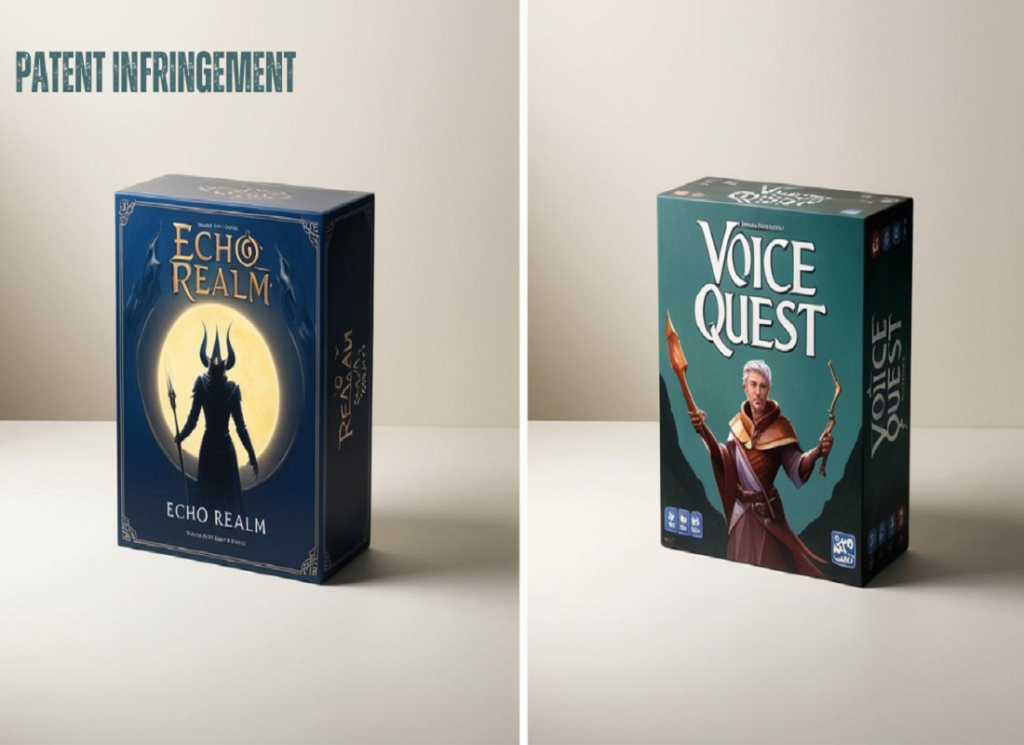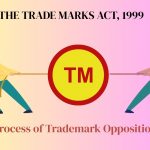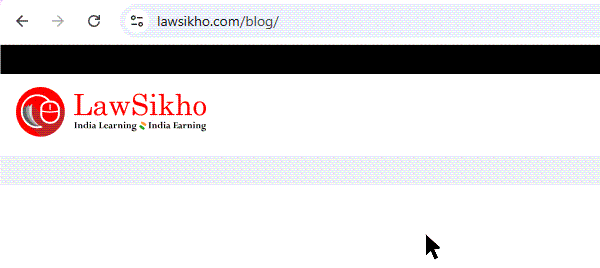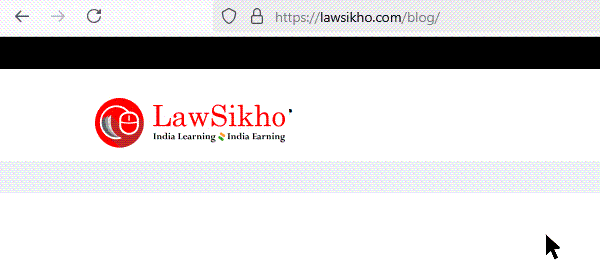This article will teach you the concepts of patent infringement and guide you through the process of filing a patent infringement suit. It will be helpful for lawyers, IP attorneys, law students, and anybody interested in understanding the framework of patents in India.
Table of Contents
Introduction
My friend Vikram and I have regular jobs.
By day, I am a lawyer, and he is a software engineer, but in our free time, we have been working on a side project— a board game with a built-in voice recognition system.
Think of chess as an example. The voice recognition system would give the command, and the pieces would move accordingly. Well, our product wasn’t chess, but it’s easier to explain this way.
I named it the Echo Realm.
It goes without saying that it took a lot of effort, but it also required endless prototypes, countless cups of coffee, and, honestly? A lot of money down the drain as well. And so finally, Vikram and I launched the product. Just as we both predicted, it was a hit.
But our product needed protection. Thankfully, other than being a board game enthusiast, I actually knew a fair bit about Intellectual property laws.
So I had taken steps early on, and we filed for a patent– an IP right that safeguards an invention, granting the creator exclusive rights to make, use, or sell it.
It was our legal shield, ensuring Echo Realm remained ours.
But then, the day arrived, and I saw it, a knockoff. Someone was selling our invention in a gaming exhibition, and with further research, I found out that it was doing well in the market, which wasn’t a surprise.
It was called Voice Quest and was sold by a company called Lunar Tech. It was essentially the same thing, just with a different storyline.
Vikram and I decided to fight back, and thankfully, because our patent was registered already, we could file a patent infringement suit.
Now, for a moment of truth, Vikram doesn’t exist, and neither does the Echo Realm, but well, I had to keep your attention, hence the story.
But now that you are here, and you care about Echo Realm or maybe your career as a patent professional, read on.
In this article, I will tell you what a patent infringement suit is and how to file the same.
What is a Patent
A patent essentially grants an inventor exclusive rights to their invention for a limited period of time. As per the Indian Patent Act, 1970 under section 53, it is 20 years.
In exchange for this, the inventor has to disclose all the details of the invention to the public.
Because I have Echo Realm’s patent, no one else can make use of the same thing. They can use my product if it’s for sale, but they cannot sell or import my invention without my permission.
If someone tries to copy it, I can file a patent infringement suit.
The legal definition
In India, patents are governed by the Patents Act of 1970, so let us look at the official definition straight from the Act:
Section 2(1)(m) of the Patents Act, 1970 defines a patent, and it says:
“Patent means a patent for any invention granted under this Act.”
Okay, my bad, that’s a bit circular. Let’s dig deeper.
Section 2(1)(j) defines an invention and it says:
“A new product or process involving an inventive step and capable of industrial application.”
There are a few words here which need a little bit more clarity, so let’s get to them:
- New: The invention must be novel, which means it should be something new. It cannot be something old, already existing, and it shouldn’t have been publicly disclosed before.
- Inventive step: It shouldn’t be super obvious to someone skilled in the field.
- Industrial application: There is no point in an invention if it’s not useful. It must be useful and capable of being made or used in an industry.
There are two more things you need to understand here. Product and Process patents:
- Product Patent
- Process Patent
Let us look at Echo Realm itself. We knew we needed to protect it. But what exactly were we protecting? The product itself? Or the process that made it work?
Product Patent
A product patent protects the invention as a tangible entity as a whole, and it will essentially grant the patent holder over the product itself, meaning no one else can make, use, or sell the same product, regardless of the process they use to manufacture it. This type of patent is commonly sought for innovations such as new drug molecules, electronic devices, or mechanical inventions.
If Echo Realm had a product patent, no one could sell a game that included our exact technology, even if they developed it differently.
Process Patent
In contrast, a process patent protects the method of creating or operating a product rather than the final product itself. This means that others may still manufacture a similar product, provided they use a different process. Process patents are particularly relevant in industries where manufacturing techniques significantly impact efficiency, cost, or functionality.
If we had a process patent for the voice recognition system in Echo Realm, Lunar Tech might still sell a similar board game but could avoid infringement by using a different underlying technology.
Can it be a mix of both?
Yes, many inventions combine both a product and a process, especially in cases where the invention involves a novel product that operates through a distinct method. In the case of Echo Realm, the board game itself was protected as a product, while the voice recognition system that controlled game mechanics was safeguarded as a process.
So why do this? Well, it is because having both a product and a process patent can strengthen legal protection by covering multiple aspects of the invention. It ensures that competitors cannot bypass infringement claims by modifying only one element. In industries where technology and functionality are deeply intertwined, securing both types of patents can provide a more comprehensive legal shield.
So, what is a Patent Infringement?
So now that we have brushed up on our basics regarding patents, let’s look at some patent infringement situations and what they essentially are.
Patent infringement takes place when someone uses, makes, sells or imports your patented invention without your permission. In India, this is governed by the Patents Act, 1970.
Here’s the key section:
Section 48:
This section grants the patent owner exclusive rights to:
- Make, use, sell, or import the patented invention
- Prevent others from doing the same without permission
So if someone violates these rights, then it automatically becomes an infringement.
You also need to note the distinction between exclusive and non-exclusive licenses when it comes to patents. What are they?
- Exclusive licensee: Only an exclusive licensee, who is the one given exclusive rights to exploit the patent, can sue for infringement, provided they obtain the patentee’s permission.
- Non-exclusive licensee: A non-exclusive licensee is one who shares rights with others, cannot initiate infringement proceedings independently.
A step-by-step guide to filing a Patent Infringement Suit in India
Step 1: Understand the patent
Before going to court immediately, you need to understand your client’s patent inside out and take time with this process. So what should you do?
Review the certificates:
I stress this part; make sure to check and confirm that the patent is valid. Don’t forget that the patent should be enforceable and registered with the Indian Patent Office (IPO).
For this, you need to check the patent grant certificate, the patent number, and the registration details in the Indian Patent Office’s official database. Ensure that the patent has not been revoked, opposed successfully, or expired.
Check the claims:
The claims essentially define the scope of the patent. Your case will ultimately hinge on whether the infringer’s product or process falls within these claims; this step is very important.
For example, if the patent for Echo Realm describes a board game that integrates a voice-controlled AI to dynamically adjust gameplay, recognize commands, and interact with players using a proprietary speech-processing algorithm, then the scope includes:
- The specific AI voice recognition technology used.
- The integration of voice commands into gameplay mechanics.
- The method by which the AI adjusts difficulty based on speech patterns.
To determine infringement, one would look at the independent and dependent claims in the patent specification. You will find these details in the patent specification document, particularly in the ‘Claims’ section of the granted patent. This section explicitly outlines the scope of protection conferred by the patent, specifying what is covered and what is not. You can access the patent specification through:
- The Indian Patent Office (IPO) online database via InPASS.
- The patentee’s records (if your client has a copy of the granted patent and its claims).
- The patent journal or Gazette publication, if the patent has been published.
If the alleged infringing game uses a similar AI-powered voice control that functions the same way as described in the claims, then it likely falls within the patent’s scope.
This is where you can conduct your search.
Verify maintenance fees:
You need to make sure that your client has paid all renewal fees; they ideally should have no pending fees. If not, the patent may lapse, and you don’t want that because then your case will crumble. To check this, review the Indian Patent Office’s online payment records or Form 27 submissions.
The IPO maintains a patent register, which indicates the patent’s status and whether all annuity fees have been paid. If fees are overdue, you may have a limited time to reinstate the patent before it becomes unenforceable.
The Indian Patent Advanced Search System also allows users to check the status of patents online. So, what Information can you find?
- Patent status (granted, abandoned, revoked, expired, etc.).
- Annuity fee payments and due dates.
- Legal history (oppositions, assignments, licensing details).
- Renewal deadlines and grace periods for unpaid fees.
And what happens if the fee is not paid? Well, if annuity fees are not paid, the patent lapses. However, the patentee has a six-month grace period to pay overdue fees with a penalty. After this period, a request for patent restoration can be filed within 18 months from the lapse date (Section 60 of the Patents Act, 1970).
Pro tip: You don’t want to be working with a patent that is weak or unclear. You can consider filing for amendments or strengthening it if it is necessary. A weak patent typically refers to a vague patent, overly broad, lacking novelty, or having unclear claims, making it difficult to enforce against infringers. Such a patent might not survive scrutiny in court or could be easily worked around by competitors.
A strong patent for Echo Realm would clearly define:
1. The specific voice-processing algorithm that makes it unique.
2. How the AI interacts with the board and players in a novel way (e.g., adjusting game difficulty based on speech patterns).
3. The hardware-software integration that enables seamless voice recognition.
A weak patent, on the other hand, might:
1. Use vague language like “a board game that uses voice commands” without specifying the underlying technology.
2. Fail to distinguish Echo Realm from existing voice-assisted games.
3. Be too broad, making it easy for competitors to tweak minor details and avoid infringement.
If Echo Realm’s patent is weak, competitors could create similar board games with voice commands by slightly modifying the speech processing method or using a different AI engine, thus avoiding infringement. In such cases, the patent holder should consider amendments to clarify claims, add specific technical features, or file for additional patents to strengthen protection.
Bolar Exemption:
You can also check if this will come into play with your particular patent. The Bolar Exemption (Section 107A) allows a third party to use a patented invention for research and regulatory approval purposes without it being considered infringement. This exemption is crucial in pharmaceutical patent disputes, where generic manufacturers can conduct trials and obtain regulatory approvals before a patent expires.
Example: If a pharma company develops a generic version of a patented drug and uses it for clinical trials and regulatory submissions, this does not constitute infringement under Indian law.
In the present case, since our patent is on a board game, and not a pharmaceutical or biotech invention, the Bolar Exemption will not apply. However, if Lunar Tech argues that they used your patented technology only for research or regulatory purposes, they might try to invoke a similar defense. But unless your patent is subject to such regulations (which is rare for software or game-related patents), the Bolar Exemption will not protect them from infringement liability.
Step 2: Investigate the infringement
Your client says their patent is being infringed, yes, that is likely true. But what you need is solid evidence. How do you build your case? Good question, let us see:
Identify the infringer who’s behind all of it? Who is doing the copying, the unauthorised selling? Are they a manufacturer, a distributor, or even an individual? Get all these answers.
Gather evidence: Purchase the infringing product as soon as you can. Collect sales records, advertisements, catalogues, and anything else you see that has this product marketed. Document any public use or sale of the infringing product.
Compare the products: Analyse whether the infringing product falls within the scope of your client’s patent claims. This may end up needing technical expertise. This happens because you may not know that much about the field. I hired an expert, and you should consider it as well.
Also, be aware of the limitation period. A patent infringement suit must be filed within three years from the date the patentee became aware of the infringement. Courts have consistently held that mere knowledge of possible infringement is not enough; the patentee must have clear evidence of infringement before the limitation period starts running.
So as soon as you suspect an infringement, you should conduct a market investigation to gather evidence and initiate legal action before the three-year period expires.
Step 3: Cease-and-desist notice
This notice should be sent, I advise you on this because it will help when you go to court. Send a legal notice to the infringer. The purpose of this is to:
- it gives the infringer a chance to stop the infringement on their own, and
- it shows the court that you attempted to resolve the matter amicably and avoided going to court the first chance you got.
What should you include in the notice?
- Details of the patent (number, date of grant, claims).
- Evidence of infringement, remember everything you collected earlier? It will come to help now.
- A demand to stop the infringement immediately, plus a warning of legal action if they fail to comply.
Pro Tip: Keep the tone professional but firm and avoid making threats you can’t back up.
Step 4: File the suit
Now, if the infringer has completely ignored your notice, it’s time to go to court. What you’ll need to file:
- Plaint: This is your statement of case.
- Include:
- details of the patent,
- how the infringer is violating the patent, are they selling or are they using your idea?,
- the relief you’re seeking (injunction, damages, etc.),
- evidence, that is all documents supporting your case (patent certificate, infringement evidence, legal notice, etc.), and
- calculate the fees based on the value of the claim, so include the court fees.
Please note that in Mumbai, patent infringement suits are generally filed before the Bombay High Court if the pecuniary value is above ₹10 crore, as it has original jurisdiction for commercial matters exceeding this threshold.
If the suit is valued below ₹10 crore but above ₹3 lakh, it would be filed in the Commercial Division of the City Civil Court under the Commercial Courts Act, 2015. This will differ from place to place, so do check your jurisdiction and valuation accordingly.
Pro Tip: I must insist on this, you must make sure to draft the plaint carefully (we’ll get to this in a bit). A poorly drafted plaint can lead to so many problems, such as delays, dismissals, etc.
Drafting a Patent Infringement Suit
Alright, now, finally, let’s get into the weeds of drafting and filing a patent infringement lawsuit. This isn’t just about knowing the law, it’s about crafting a compelling case that wins. I’ll walk you through the contents of the lawsuit, how to draft it and give you examples to make it crystal clear. Let’s dive in.
The plaint (Your statement of the case)
The plaint is the heart of your lawsuit. It’s where you lay out your case for the court. Think of it as telling a story, your client’s story. Here’s what it should include:
Title of the suit
Start with the basics. Include:
- The name of the court.
- The names of the parties (the plaintiff will be your client, the one who is infringing will be the defendant).
- The suit number (assigned by the court).
Here’s an example:
IN THE HIGH COURT OF BOMBAY
(Ordinary Original Commercial Jurisdiction)
Civil Suit No. ___ of 2025
1. Vikram Ram Kumar
101, Linking Road,
Mumbai, Maharashtra – 400050
…Plaintiff No.1
2. Raj Sinha
101, Linking Road,
Mumbai, Maharashtra – 400050
…Plaintiff No. 2
vs.
Lunar Tech Ltd.
Cyber Hub Tower
33rd Rd, Khar, Khar West,
Mumbai, Maharashtra – 400052
…Defendant
We are filing it in the Bombay High Court because, in this case, the defendant’s company is based in Mumbai or sells infringing goods in Mumbai; therefore Bombay courts will have jurisdiction. We are also filing in the HC because we are asking for relief of 15 crore, up to 10 crore will be filed in the lower courts.
Introduction
Firstly, you need to mention why this particular suit is filed in the court. Then, introduce your client and their patent. Also include the subject matter of the plaint.
Example:
SUIT FOR PERMANENT INJUNCTION, RESTRAINING INFRINGEMENT OF PATENTS AND DAMAGES UNDER SECTIONS 104 READ WITH 48 OF THE PATENTS ACT, 1970.
MOST RESPECTFULLY SHOWETH
- It is humbly submitted that Plaintiff No. 1 and Plaintiff No. 2, Vikram Ram Kumar and Raj Sinha, are the inventors of ‘Echo Realm’, which is a board game integrated with voice recognition technology.
- On 15th March 2020, the Plaintiffs were granted Indian Patent No. 123456. This was for the innovative gaming system.
- The subject matter of the present suit is Patent No.123456, which relates to an innovative method and system for voice-controlled board game mechanics. The patent provides an advanced solution in the gaming sector by integrating real-time voice command processing and mechanical actuation of game pieces.
- The patented technology enables game pieces to move upon receiving voice commands from the players, thereby integrating Artificial Intelligence (AI) and voice recognition into a board game setting. The technology has been widely appreciated in the gaming industry and has gained a strong presence in the market. A copy of the granted patent document has been filed as ANNEXURE – A.
- The said patent was duly examined and granted by the Indian Patent Office, after a thorough review of prior art and examination process. The corresponding applications for the same technology have been filed in other jurisdictions as well.
- The Plaintiffs enjoy exclusive rights under section 48 of the Patents Act, 1970, which prohibits any unauthorized person or entity from making, using, offering for sale, selling, or importing the patented invention without the consent of the patent holder.
Facts of the case
This is where you tell your client’s story. Break it into clear, numbered paragraphs. Include:
- Details of the patent (number, date of grant, claims).
- How your client developed and commercialised the invention.
- How the defendant is infringing the patent.
- On 15th March 2020, the plaintiffs were granted Indian Patent No. 123456 for a ‘Board Game with Integrated Voice Recognition System.’
- The plaintiffs have invested years of effort and significant resources in research and development. It was successfully launched and commercialized. ‘Echo Realm,’ which has gained widespread popularity.
- In January 2025, the plaintiffs discovered that the defendant, Lunar Tech Ltd., is manufacturing and selling a board game called ‘Voice Quest’. This incorporates the patented voice recognition system without authorization.”
- In order to verify the infringement, the Plaintiffs deputed an enquiry representative who attended a gaming exhibition on 29.01.2025, where the Defendant had set up a booth for showcasing Voice Quest. The representatives collected brochures and purchased a unit of the said product for further examination.
- Upon testing the product, it was confirmed that Voice Quest functioned identically to the patented Echo Realm system, using an identical method of real-time voice recognition-based piece movement, thereby infringing Patent No.123456
- Further inquiries revealed that the Defendant had already begun distributing the infringing product to gaming retailers and online marketplaces across India, leading to financial losses and damage to the goodwill of the Plaintiffs. The detailed Enquiry Report has been attached as ANNEXURE-B for the Hon’ble Court’s kind perusal.
Particulars of infringement
- Identify your client’s patent
This may have come up already in facts, but you can highlight it again here. Start by clearly stating which patent has been infringed. Go ahead and provide the patent number, title, and grant date. Also, you should briefly describe the novelty and inventive features of your new product or whatever you have invented.
- The plaintiff is the registered proprietor of Indian Patent No. 123456. titled ‘Board Game with Integrated Voice Recognition System. The patent was granted on January 1, 2020, under the Patents Act, of 1970. The patent claims a unique voice-command-based interactive board game. A game that recognizes player inputs and dynamically adapts game responses.
- Describe the infringing product.
Now, we must talk about the defendant’s product. That would be the next step in this process. You should introduce it now. You need to give its name. Then you should describe its features and explain how it is being sold or distributed.
- The defendant is engaged in the manufacture, sale, and distribution of a board game titled ‘Voice Quest’. This was launched in January 2025. The defendant has extensively marketed this product. Online platforms, retail stores, and gaming expos have been used. This is directly competing with the plaintiffs’ patented product.
- Conduct a claim-by-claim comparison.
Okay, so this is pretty serious. You must map out a comparison, essentially. You can highlight similarities here. Make sure to strengthen your case by specifying how the defendant’s product infringes on your client’s patent.
Here’s where you prove your case. You need to show the court exactly how the defendant’s product copies your client’s invention. Don’t just say ‘They copied it’; break it down and claim by claim.
Let’s take my case for example. Patent (No.123456) covers a ‘Board Game with Integrated Voice Recognition System’, right? It has three key features:
- I told you that it has a voice recognition module that interacts with physical game pieces.
- I also mentioned that it has an in-game response system based on voice commands.
- It also has a pre-programmed AI that adapts to the player’s voice patterns.
Now, what does Lunar Tech’s ‘Voice Quest’ have?
- A voice module that interacts with game pieces sounds familiar, right?
- An AI-based response system, where have we heard that before?
- A nearly identical command recognition feature, not a new thing if you ask me.
See the problem? Their product isn’t just ‘similar’, it’s practically a carbon copy. That’s direct infringement under the Patents Act. If you can back this up with technical comparisons and expert opinions, your case gets even stronger.
- The counsel humbly submits that the core invention in the plaintiff’s patent introduces a board game that integrates voice recognition technology to modify gameplay based on verbal inputs.
Similarly, the defendant’s product, ‘Voice Quest,’ incorporates a voice-activated system that alters the game’s progression based on spoken commands, thereby replicating the patented concept. - It is submitted further that from a technical mechanism perspective, the plaintiff’s patent utilizes speech processing software in conjunction with physical board game mechanics. The defendant’s product employs an identical speech-processing mechanism to control in-game actions, mirroring the patented technology without authorisation.
- It is also submitted that the key claims of the patent establish that the system dynamically processes verbal commands to influence and alter gameplay actions. The defendant’s product, ‘Voice Quest,’ implements a similar system without authorization, effectively mimicking the gameplay modifications protected under the plaintiff’s patent.
- Show evidence of infringement.
So I need to back up your claim with solid proof, right? You must do the same. The more tangible it is, the better, trust me.
Examples of evidence to attach:
- Screenshots of the defendant’s website advertising the infringing product.
- Product demonstration videos showing the infringing features.
- Expert technical analysis comparing the patented invention and the infringing product.
- Customer reviews/testimonials indicate that the defendant’s product works identically to the patented one.
- The plaintiffs have obtained an independent technical report. This report confirms that ‘Voice Quest’ integrates the same voice-command-based mechanics and speech-processing algorithms as the plaintiffs’ patented technology.
The report, prepared by XYZ Forensic Tech Solutions, provides a detailed comparative analysis of the source code, functionality, and algorithmic structure, highlighting substantial similarities.
Furthermore, the report references benchmark tests and performance evaluations, demonstrating that ‘Voice Quest’ replicates key features outlined in the plaintiffs’ patent claims. The report is attached and marked as ANNEXURE- C.
- Establish the defendant’s knowledge and intent.
Remember that cease and desist? It will come into the picture now. You need to prove that the defendant knew about the patent. But that didn’t stop anything, and they still continued to copy your product.
- The plaintiffs had previously sent a cease-and-desist letter dated February 1, 2025. This informed the defendant of the patent rights. Despite this notice, the defendant continued manufacturing and distributing the infringing product, demonstrating willful infringement.
Conclusion
Here, summarise why the defendant’s actions constitute and result in infringement. You need to emphasise the need for legal remedies.
- Based on the foregoing, it is evident that the defendant’s actions amount to direct infringement of Indian Patent No. 123456 under section 48 of the Patents Act, 1970. The plaintiffs, therefore, seek appropriate injunctive relief, damages, and an account of profits earned by the defendant through the infringing product.
Cause of action
Here you need to explain why the court has jurisdiction. You also need to mention what legal rights have been violated. You can’t just file a patent infringement case anywhere, you know that right? It has to be in the correct place, the right court.
So, what does section 104 say? Only a District Court or a High Court with original jurisdiction can hear patent disputes. Lunar Tech is selling ‘Voice Quest’ in Mumbai. So, mention that.
- It is humbly submitted that the cause of action in the present suit first arose in the month of January 2025, when the Plaintiff No. 2 discovered that the Defendant, Lunar Tech, was engaged in the unauthorized use of the patented technology of their board game, Echo Realm.
- The cause of action further arose when the Plaintiffs, upon attending a gaming exhibition, witnessed the Defendant offering for sale an infringing product named Voice Quest, which was found to replicate the core features of Echo Realm, which also has a built-in voice recognition system for gameplay.
- The cause of action arose once again when, upon further investigation, the Plaintiffs discovered that the Defendant’s infringing product was being actively marketed and sold in the gaming market, gaining commercial success by misappropriating the patented technology.
- The Defendant continues to engage in the unauthorized manufacture, sale, and distribution of Voice Quest, causing irreparable harm to the Plaintiffs’ exclusive rights under the patent.
- The cause of action is a continuing one and shall continue to arise until the Defendant is restrained by an order of injunction from this Hon’ble Court.
Jurisdiction
Here, you have to include the mandatory clauses of valuation and court fees and limitation and also that no other suit or proceedings are filed in any other court.
- This Hon’ble Court has jurisdiction under section 20 of the Code of Civil Procedure, 1908, as the cause of action arose within its territorial jurisdiction. Additionally, under section 104 of the Patents Act, 1970, this Hon’ble Court is the court of first instance for patent infringement matters.
The valuation of the suit, including court fees and damages, satisfies the pecuniary jurisdiction of this Hon’ble Court. Therefore, this gives this Hon’ble Court jurisdiction under section 104 of the Patents Act, 1970.
Relief sought
Let me remind you to tell the court what you want and be very specific about it. Keep in mind that the value of the claim will differ with each jurisdiction. Higher courts will be higher than lower courts, but you need to check your valuation, the place, etc, to determine the final amount.
The plaintiffs pray for:
- A permanent injunction, restraining the defendant, their partners, proprietors, officers, servants, agents, and all persons acting on their behalf from manufacturing, selling, offering for sale, or distributing the infringing product Voice Quest, or any other product that infringes Patent No. 123456.
- An order for rendition of accounts of profits, directly or indirectly earned by the Defendants from their infringing activities and wrongful conduct, and a decree for the amount so found due to be passed in favour of the Plaintiffs.
- A decree of damages of Rs. 15,00,00,000/ – in favour of the Plaintiffs and against the Defendant, for loss of sales, reputation and goodwill of the Plaintiffs caused by illegal activities of the Defendants.
- An order as to the costs of the proceedings in favour of the Plaintiffs.
Any further order as this Hon’ble Court may deem fit and proper in the facts and circumstances of the case.
Interim relief (optional, but recommended)
Patent cases take years to resolve, and in that time, the defendant could make massive profits from your client’s invention. That’s why you should always request interim relief, it’s like hitting pause on the infringement while the court sorts everything out.
Let me also tell you about the Anton Piller Order (ex parte search and seizure). The Anton Piller Order allows search and seizure of infringing materials without notifying the infringer, preventing destruction of evidence. This remedy is discretionary and granted in cases where there is a risk of crucial evidence being tampered with or destroyed. So how do you determine this? On what basis will courts grant temporary injunctions?
Three-pronged test for interim injunctions:
- Prima facie case: The plaintiff must demonstrate a strong likelihood of success based on facts and legal grounds.
- Balance of convenience: If denying the injunction would cause more harm to the plaintiff than the defendant, the court may grant it.
- Irreparable harm: The plaintiff must show that, without an injunction, they would suffer harm that cannot be compensated by monetary damages.
Therefore, a court won’t grant an ad-interim injunction just because you ask. You need to show that if the defendant keeps selling the infringing product, your client will suffer serious, irreversible harm. You need to convince the judge that waiting for a final decision isn’t an option because: Your client is losing sales and market share every day. Once a knockoff product gains traction, it’s hard to undo the damage, so you must try to avoid this situation from coming up.
So, spell it out:
‘If an injunction isn’t granted, the defendant will continue to market and profit from the infringing product, causing irreparable financial and reputational harm to the plaintiffs. Given the ongoing damage, the plaintiffs seek an urgent ad-interim injunction to restrain the defendant from further sales and distribution of ‘Voice Quest’ until the final verdict.’
Verification
Okay, finally, you can end with a verification statement, signed by your client.
VERIFICATION
I, Vikram Ram Kumar, plaintiff no. 1, do hereby verify that the contents of the plaint are true and correct to my knowledge and belief.
______________
Plaintiff No. 1
Through
_______________
Attorney
_______________
Plaintiff No. 2
Through
______________
Attorney
Supporting documents
Your plaint is just the beginning, you need solid evidence to back up your claims. The stronger your supporting documents, the better your chances of winning. Here’s what you should include:
- Patent certificate: Prove ownership
This is your client’s proof of exclusive rights over the invention. Without this, it is pretty obvious that your claim won’t hold up.
For example, I attached a certified copy of Indian Patent No. 123456 to establish legal ownership.
- Evidence of infringement: Show how your patent was copied
Your job here is to very clearly demonstrate that the defendant has used your client’s patented technology without permission. Gather as much tangible proof as you can.
Examples include:
- Photographs or product samples of the infringing item.
- Sales invoices or advertisements proving it’s available in the market.
- Technical reports comparing your patent claims with the infringing product.
- Legal Notice: Prove you took prior action
Before filing a lawsuit, as I mentioned, you should have officially warned the infringer. This helps show the court that you tried to resolve the issue before litigation. Pre-litigation mediation is actually mandatory under the Commercial Courts Act, 2015, in many jurisdictions unless the patentee seeks urgent relief such as an injunction.
Before filing the suit, you should serve a legal notice to the infringer. This step is advisable but not legally mandatory. However, failure to explore mediation may be viewed unfavorably by the court.
Please keep in mind that there are exceptions in cases involving immediate relief (e.g., interim injunctions) that are exempt from pre-litigation mediation.
For example, I attached a copy of the cease-and-desist notice sent on 1st February 2025. I demanded that the defendant stop the infringement. I also included my emails and every notice and conversation that took place.
- Financial records: Prove the damage
If you’re claiming damages, you need to show real financial loss. The court won’t take your word for it, you need numbers. Consider including:
- Your client’s sales records show a decline in revenue after the infringement.
- The defendant’s sales data (if available) proves they profited from your client’s invention.
Final Tip:
I always organise the documents. I also urge to also to always organize your documents logically and clearly label each exhibit. I believe that the easier you make it for the court to follow your arguments, the stronger your case will be.
Conclusion
I hope you are left with no confusion. You must take all the necessary steps before and after going to court with your suit. And in this whole process, your suit is the most important thing. So, make sure that it is well drafted and has no mistakes. Be clear with every detail and convince your court accordingly. It may be a little complicated, but you will get the hang of it eventually. If you have a client whose invention has been stolen, then it is time for you to step up and take action!






 Allow notifications
Allow notifications
